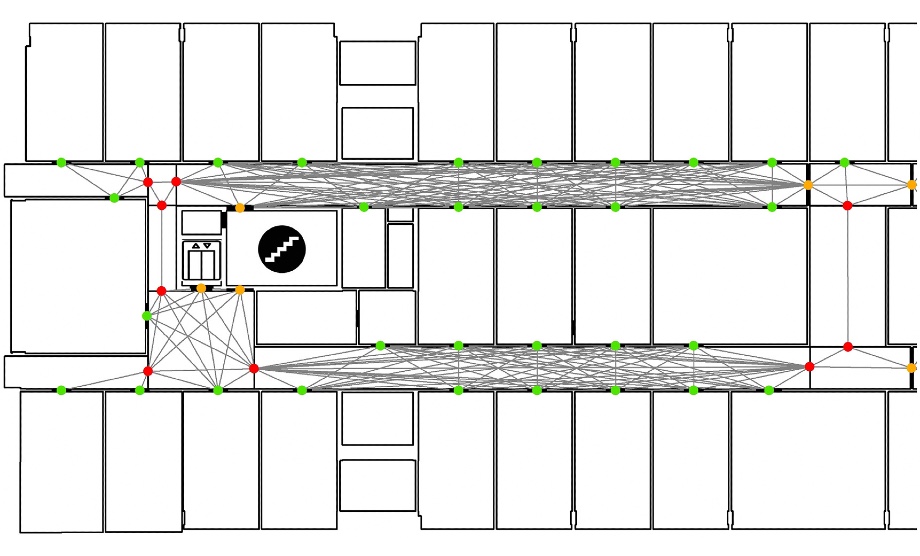New Publication
HiVG: A hierarchical indoor visibility-based graph for navigation guidance in multi-storey buildings
Environment and Urban Systems, 93:101751
https://doi.org/

Zhou, Zhiyong; Weibel, Robert; Richter, Kai-Florian; Huang, Haosheng
Abstract
A hierarchical data model is needed in mobile navigation systems to generate route instructions on multiple levels of detail (LODs), thereby adapting to users' various information needs during navigation. In complex multi-storey indoor environments, existing hierarchical data models mainly rely on logical graphs that represent indoor cellular spaces as nodes and adjacency as edges. Due to the lack of precise geometry, however, they have limited capability to support the accurate computation of walking distance and directions, which are essential in route instructions. This article proposes a hierarchical indoor visibility-based graph (HiVG) for navigation guidance in multi-storey buildings and presents a HiVG generation algorithm. The algorithm's input is an indoor visibility graph (iVG) in which the orientations of nodes to corridor areas are represented. In the algorithm, first the functions of edges in indoor route instructions are identified, after which an edge function-based graph partitioning iteration is performed to generate each level of the HiVG. Experiments with three buildings of different geometric configurations demonstrate the potential of our HiVG generation algorithm. Furthermore, the conducted case studies show that the proposed HiVG is appropriate for generating indoor route instructions on multiple LODs.